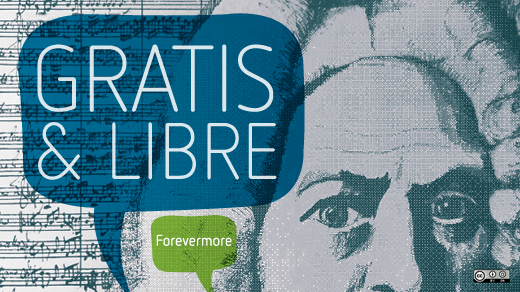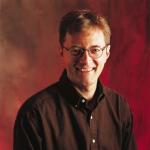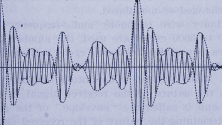Open source software has come a long way since the moniker "open source" was first coined in 1998. The Cathedral and the Bazaar helped to explain this new paradigm of software production, and history has proven that the profound implications predicted by Raymond’s essay were not only credible, but now also obvious. And perhaps because of the open source software community’s awesome record of success, those who work outside the strict boundaries of software development have started to wonder: Are there new paradigms, based on open source principles, that could rock our world, too?
We have seen this happen in the world of creative content with Creative Commons. Larry Lessig, following a straightforward reading of the US Constitution and building on many of the insights published years earlier by Lewis Hyde in the book The Gift, realized that while there was nothing wrong with commercializing content per se, there was something very wrong about treating cultural resources as private, alienable property forever. Lessig believed, and I agree, that there is a benefit to giving the public some agency over the content that defines their culture, just as open source gives other developers—even users—agency over the software they have. Look at how the public has used that agency to create Wikipedia, a phenomenal collection of one of our most valuable cultural artifacts: human knowledge.
But there have been limits to the reach of Wikipedia, in part because many cultural artifacts that could be part of the commons are instead enclosed by seemingly perpetual copyrights. Music is a cultural cornerstone, with nations, peoples, eras, and idealistic, artistic, and political movements all reaching for it to define themselves, much the way that individuals also define themselves based on their musical tastes. Given the importance of music to cultural identity, how much agency should we have over it, and in particular, over the portions that are supposed to belong to the public domain?
An astonishing answer to this question comes from two essays written in 1966 by Glenn Gould. Even if you don’t know much about classical music, chances are good that you have heard of the Goldberg Variations by JS Bach. If so, you probably have Glenn Gould to thank for that, because when he was 22 years old, he signed a recording contract, and in six days recorded Bach: The Goldberg Variations as his debut over the objections of at least one label executive. At that time, Goldberg was far outside the standard piano repertoire and considered "esoteric." Gould was unbowed, and as Wikipedia reports, "the work launched Gould's career as a renowned international pianist, and became one of the most well-known piano recordings." Not to mention it also made Goldberg a standard for the classical piano.
Gould’s decision in 1964 to cease giving public performances and to focus on recording greatly upset the music establishment, which saw such performances as the pinnacle of musical culture and which treated musical recordings as decidedly second-class. Gould addressed these criticisms not by arguing against them, but by changing the paradigm.
Which only upset them even more. Here is the essence of the paradigm change that Gould explains in The Participant Listener:
At the center of the technological debate, then, is a new kind of listener—a listener more participant in the musical experience. The emergence of this mid- twentieth-century phenomenon is the greatest achievement of the record industry. For this listener is no longer passively analytical; he is an associate whose tastes, preferences, and inclinations even now alter peripherally the experiences to which he gives his attention, and upon whose fuller participation the future of the art of music waits.
He is also, of course, a threat, a potential usurper of power, an uninvited guest at the banquet of the arts, one whose presence threatens the familiar hierarchical setting of the musical establishment. Is it not, then, inopportune to venture that this participant public could emerge untutored from that servile posture with which it paid homage to the status structure of the concert world and, overnight, assume decision-making capacities which were specialists’ concerns heretofore?
There is much to unpack in the above two paragraphs, but give this a try: read the above as a musical allegory for the paradigm shift from proprietary to open source software. It may be difficult to imagine today, but when I was proposing the idea of starting a company to provide commercial support for free software, one of the principal objections was "free or not, users don’t want source code. They don’t want to touch it. They want to pay money for the best solution, period." The proprietary software paradigm could never imagine that the best solution might very well include the user becoming a participant in the development of software. It could not tolerate the concept of users assuming decision-making capacities which were specialists’ concerns heretofore. But Cygnus Solutions proved that the future of software was actually waiting for the fuller participation of users. And so, too, is the future of the art of music, which Gould obviously anticipates:
The keyword here is "public." Those experiences through which the listener encounters music electronically transmitted are not within the public domain. One serviceable axiom applicable to every experience in which electronic transmission is involved can be expressed in that paradox wherein the ability to obtain in theory an audience of unprecedented numbers obtains in fact a limitless number of private auditions. Because of the circumstances this paradox defines, the listener is able to indulge preferences and, through the electronic modifications with which he endows the listening experience, impose his own personality upon the work. As he does so, he transforms that work, and his relation to it, from an artistic to an environmental experience.
Here Gould makes a profound philosophical point, and one which is easily misunderstood because of his terminology. He is not saying that arbitrary electronic transmissions automatically cause the original content to be treated as if it is common property owned by the public. Rather, he is saying that when the signal becomes a human experience, the experience is not generic, but unique to the individual. And that the future of the art of music depends on respecting the individuality of the experience, not on enforcing the uniformity of the transmission. [As a side note, consider the incredible legal contortions that the music industry goes to when it tries to claim that digital downloads are not "purchases" (therefore subject to the first sale doctrine), but rather "transactions" (conferring no rights whatsoever beyond that of being passively analytical, allowing no posture other than servile).]
Gould wrote this 20 years before Lewis Hyde published The Gift and 20 years before Stallman wrote the GNU Manifesto. 30 years before Lawrence Lessig wrote Code and other laws of Cyberspace and 30 years before Eric Raymond wrote The Cathedral and the Bazzar. 40 years before I started to imagine how The Miraverse could bring together the ideas of the Creative Commons and open source to create a new, sustainable future for music. But now, the boldest idea he proposed (from The Prospects of Recording) can be realized:
It would be a relatively simple matter, for instance, to grant the listener tape-edit options which he could exercise at his discretion. Indeed, a significant step in this direction might well result from that process by which it is now possible to disassociate the ratio of speed to pitch and in so doing (albeit with some deterioration in the quality of sound as a current liability) truncate splice-segments of interpretations of the same work performed by different artists and recorded at different tempos. [...] This process could, in theory, be applied without restriction of the reconstruction of musical performance. There is, in fact, nothing to prevent a dedicated connoisseur from acting as his own tape editor and, with these devices, exercising such interpretive predilections as will permit him to create his own ideal performance [...]
It is true that in Gould’s day the technology was not readily available to offer audiences such agency: in his time multi-track recording was unimaginably expensive, and available only in a few exclusive commercial recording studios. But today things are different, at least on the technology front. Ardour is an excellent Digital Audio Workstation (DAW) that allows any laptop computer to become a powerful multitrack audio editor and recording device. And the desire on the part of participant listeners is there. But the most powerful software tools in the world cannot create a compelling performance from nothing; there must be an artist who is willing to create the sonic canvas that can then be mixed and remixed according to taste. And of course there must be a commercial rights framework that does not auger the whole enterprise right into the ground. This is what makes the Open Goldberg Variations project so interesting: it is the answer to the challenge that Gould laid down 40+ years ago. It is the next evolutionary step in the musical legacy that traces from JS Bach through Gould to the present day. It invites each listener to become a participant in the future of the art of music.
Variations in the key of open source
Kimiko Ishizaka is the artist who has made the bold move from concert pianist to cultural resource by liberating both the source code to Bach’s works (professionally typeset scores by MuseScore) and the performance data (in the form of an audio recording) to give audiences unprecedented experiences of both musical joy and the sense of freedom that comes from authentic agency. Which is to say: the agency to create; the agency to manipulate to taste; the agency to grow the commons by sharing what one is passionate about.
So back to the question at hand: Can there be open source music? Or rather, what can open source music become? OHM2013 just concluded up a week of "Observe. Hack. Make." One hacker who attended offered these thoughts:
A piece [of music] can be considered free and open source if there are good quality recordings available with permitting licenses (equivalent of a precompiled binary package distribution), and good quality sheet music, containing all the instructions and comments of the original composer, is available in an editable, reusable format, also with a proper license (think of it as the source code for a software you can freely copy, change, use, compile, interpret, whatever.)
The Open Goldberg Variations is the first big project to get some of Johann Sebastian Bach’s works open-sourced in this term ("Bach to the future"), with the aid of crowd-funding. You can download lossless audio recordings performed by Kimiko Ishizaka, and of course, the sheet music in MuseScore and Music XML formats, all being in the public domain.
That is a great start. What makes it an even better start is that there is an active community making this happen. A community of diverse people who each play important roles, who work together to create what none can do by themselves. And top-notch environments that can produce commercially viable and critically acclaimed releases on a reliable basis.
One such environment is The Miraverse, the experiential identity of the studios at Manifold Recording. On one side of the Control Room glass is the Music Room (above), and on the other side, an API Vision analog console recording up to 64 tracks using Ardour (below).
These environments are complemented by a third environment, the Studio Annex, which offers a Linux-based Harrison Trion Console supporting a variety of surround sound formats with up to 96 channels at 96kHz:
In these studios, open source music can be recorded, auditioned, and mixed with the finest audio equipment, the finest acoustic environments, and open source software. The participant listener can experience the act of recording (itself an amazing process) and also experience the creative choices that are possible once the mixing process begins.
Are you interested in becoming a participant listener? Kimiko Ishizaka will be touring Europe and North America in preparation for her recording of the Well-Tempered Clavier. The first concert will take place at the Beethovenfest Bonn in Germany (September 24); from there Ms. Ishizaka will go on to perform in Prague (September 25 and 26), Munich (September 30), Vienna (October 2), Hamburg (October 12) and again in Bonn (October 18), and Ruiselede, Belgium (October 20). Ms. Ishizaka’s North American dates will take her to Ann Arbor, MI (October 23); the Pianoforte Foundation in Chicago, IL (October 26), The Miraverse at Manifold Recording in Pittsboro, NC (November 3), and the University of South Carolina, Columbia, SC (November 6).
Just like any other open source project, your interest and your participation can make it not only a success, but an industry-defining success. This is our goal. By attending one of her performances, by participating in the Twelve Tones of Bach Kickstarter campaign (which is one way to purchase tickets for these performances), by attending the Recording Salon we are holding at Manifold Recording on November 3, you can fully enjoy your own experiences of the music, the community, and the prospects of recording, while helping the project and its principals achieve its larger goals. We hope to see you this fall... and long into the future!
For further reading, The Audio Engineering Society chapter in Toronto has this report from their October meeting in 2012. The buzz is growing!









23 Comments